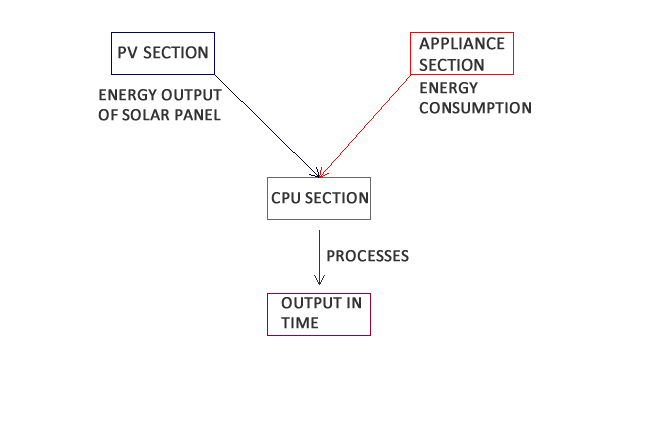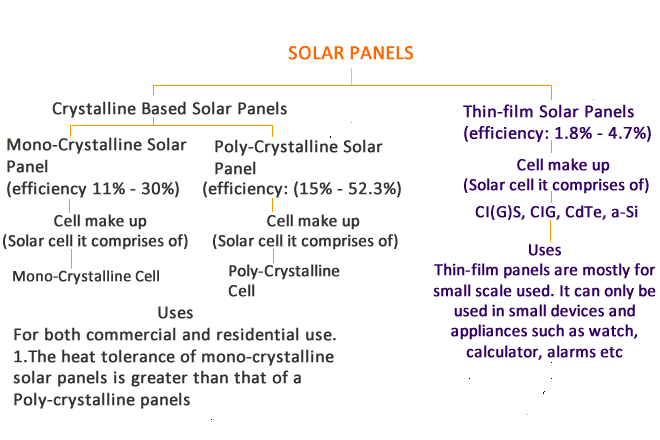SOLARIUM | You are my Sunshine
Team Updates
SAVING ENERGY
Energy is a phenomenon, “a quantity” science may say. It existence is as old as knowing the age of the earth we live in. Humans over the years are dependent on energy, not only humans even the animals and the eco-system at large.
Science says “energy can neither be created no destroyed but can be converted from one form to another” this means human cannot create or destroy energy but can transform it into various forms for different purposes.
The food we eat is changed by the body into chemical energy which the body system works on, so does machines use electricity to function by converting various energy forms.
Humans have long depended on fossil fuel and crude oil (petroleum) as a major production of electricity. Electricity is a form of energy currently used in our era. It need is alarming and as human we always have to look for means to create more electricity. Producing electricity using petroleum and fossil is becoming alarming and it is really hurting the eco-system. It is high time we find alternative means of generating energy which is cleaner, safer and eco-friendly or we are bound to doom our eco-system.
THE SUN
The sun has been long neglected by humans. We haven’t fully recognized it great potentials and it importance to all live form. The Sun is a major generator of all energy we use. The energy generated by the sun is called SOLAR ENERGY. Imagine if the sun doesn’t shine for a day or more… everything will be lost. The sun has been considered as the source of all energy, since this is true, isn’t it possible to convert its energy to electricity?
YES! It is very possible due to discoveries and inventions of Albert Einstein, Max Planck and various scientist, photoelectric effect (light that produces energy (electric energy) through a medium) was found which gave rise to the invention called PHOTO CELLS.
SOLAR CELLS AND SOLAR PANELS
This photo cells recently called SOLAR CELLS are special cells which accept light no matter its intensity to produce electric energy (electricity). A solar cell is also called A PHOTOVOLTIC CELLS.
SOLAR PANELS
A solar panel is the array or combination of more than one solar cells. The invention of solar panel has really boosted the production of electricity and is now a cleaner medium to produce eco-friendly energy. Solar panels can be used at homes, offices, schools, auto-mobiles, various appliances even spaceships and satellites make use of solar panels and it system of generating energy. It uses are endless and if humans utilize solar panel technology efficiently things will turn around for good of our eco-system.
Due to recent inventions and research on solar cells, this give rise to various solar cells with different purposes. But we will only dwell on solar cells used for generating electricity for residential use.
Types of solar cells:
- Amorphous Silicon solar cells (a-Si)
- Cadmium telluride solar cells (CdTe)
- Copper Indium Gallium selenide solar cells (CI(G)S or CIG)
- Crystalline Silicon solar cells (c-Si)
The crystalline Silicon solar cells are generally called Wafer based Silicon cells and are sub-divided into two:
- i.Mono-crystalline solar cells
- ii.Poly-crystalline solar cells
Types of Solar panels:
- Thin-film solar panels
- Mono-crystalline solar panels
- Poly-crystalline solar panels
Types of Solar panels majorly used for residential purposes and also commercial purposed are:
- Mono-crystalline solar panels
- Poly-crystalline solar panels
Ecological effect on solar panels in Nigeria.
Our environment (weather) has a lot of effect on the type of solar panel to be used. In Africa and Nigerian to be precise a mono-crystalline solar panel is best suitable because of it high tolerance to heat. In Nigeria most times it is usually sunny depending on the weather and season. Due to research data it has been recorded for Nigeria to have an average of 6 hours sunshine annually and a cumulative range of 7.0-5.0kwatts/meter2(7000-5000 watts/meter2) of solar radiation per day annually.
Solar radiation: is the amount of sunlight in a particular area at a given time. It is measured in watt per meter square(watts/meter2)
Here is a pictorial view of the amount of solar radiation in various regions in Nigeria in this hyperlink. https://www.hindawi.com/journals/jse/2015/819307/fig3/These hyperlinks are graphs to give information on the cumulative amount of solar radiation in various regions in Nigeria.
https://www.researchgate.net/figure/258071190_fig10_Map-of-Nigeria-showing-the-station-locations
https://www.researchgate.net/figure/258071190_fig5_FIG-5-Hargreaves-horizontal-surface-solar-radiation-in-southwestern-NigeriaHOW TO KNOW AND CALCULATE THE ENEGRGY PRODUCED BY A SOLAR PANEL IN YOUR REGION.
There are two ways of finding the total power and energy a solar panel can generate at a given moment.
METHOD ONE
Using the solar radiation of your location, the area of the solar panel and the efficiency of the solar panel multiply them your result is the output power of the solar energy.
Example:
If you have a panel of area 1.568m2 and the solar radiation of your location measured by the panel is 5240watt/meter2 and the efficiency of the panel is 17.10%. Then what is it total output power of the solar panel? (solar radiation of a panel is measured using a device called SOLAR IRRADIANCE)
POWER= SOLAR RADIATION × AREA × EFFICIENCY
POWER= 5240×1.568×.171 = 1404.9907watts
TO FIND THE ENERGY OUTPUT OF A SOLAR PANEL
ENERGY = SOLAR RADIATION × AREA × EFFICIENCY ×T IME (IN HOURS)
Example:
If you have a panel of area 1.568m2 and the solar radiance of your location measured by the panel is 5240watt/meter2, the efficiency of the panel is 17.10% and was left to charge a dc battery for 10minutes. Then what is it total Energy of the solar panel? (solar radiance of a panel is measured using a device called SOLAR IRRADIANCE)
ENERGY = SOLAR RADIATION × AREA×EFFICIENCY × TIME (H)
ENERGY = 5240×1.568×.171×(10÷60minutes) =234.1651wattshour
Let assume you want to charge your Laptop of 65watt with the energy output (234.1651watthour) generated from the panel. How long will it last before the energy drains out?
Solution.
ENERGY = POWER×TIME (H)
TIME = ENERGY ÷ POWER
TIME = 234.1651 ÷ 65 = 3HOURS 6MINUTES
METHOD TWO
This second method is deduced under theoretical assumptions and research data; it might not be absolutely correct but gives the estimated value of the energy generated during charge. In this case we use the maximum power of a solar panel specified by manufacturer and multiply it with the duration of charge usually in hours.
Example:
If we have 250watt rated solar panel. Since it maximum peak power value is known (250watt). To find it energy charged at a particular time duration let say 2 hours, we have:
ENERGY =250 × 2 = 500wattshour
HOW TO DETERMINE THE MAXIMUM PEAK POWER VALUE OF A SOLAR PANEL (MONO-CRYSTALLINE SOLAR PANEL)
That power(watt) of a solar panel is usually given by the manufacturer depending on what the solar panel was built for. For most solar panels built for residential use it power value (watt) ranges from 50watts – 350watts. The power of a solar panel is usually gotten from the individual cells used to construct the solar panel. The power rating of just one mono-crystalline solar cell ranges from 5.2watts -2watts.
This means that if a mono-crystalline solar cell of power 5.2watts is combined with 20 more cells to make a solar panel, that means we would get a solar panel of power rating 104watts (5.2 × 20).
FACTORS THAT CONTRIBUTE TO THE ENERGY GENERATION OF A SOLAR PANEL
- The power of the solar panel
- The efficiency
- Solar radiation in your region
- Places where solar panels are installed (roof or ground)
A t this point we would love to show you a brief directory of mono-crystalline solar panel of various watts (power)
Power of mono-crystalline panels (watts) | Manufacture | Number Of solar cells | Power of one solar cell (watts) | Voltage (Voltage) | Currents (Amperes) | Efficiency (%) | Energy it produces per day (watts hour) | Area of panel (meters2) |
50 | Dikio (Daodaojia) | 36 | 1.39 | 18.00 | 2.78 | 17 | 711.4013 | 0.53×0.63 (0.3498) |
100 | Boguang | 32 | 3.13 | 17.6 | 5.71 | 21.3 | 2961.1008 | 1.05×0.54 (0.567) |
200 | Dikio (Daodaojia) | 72 | 2.77 | 36 | 5.56 | 17 | 6669.0048 | 1.58×0.808 (1.277) |
250 | Dikio (Daodaojia) | 60 | 4.17 | 30 | 8.33 | 17 | 8392.3960 | 1.64×0.98 (1.607) |
From the data above let explain how the energy was gotten.
Recalling that ENERGY = SOLAR RADIATION × AREA OF THE SOLAR PANEL × EFFICIENCY × TIME (H)
Using a panel of 250watts from the table above, and the solar radiation gotten from the sun is 5.12kilowattshour (5120wattshour) at a time 6hours.
Energy = 5120×1.607×0.17×6 = 8392.3960wattshour.
From the information gotten from the table above, it is now possible to see the required energy got from a solar panel. This energy is stored in a battery cell for various purposes and converted by a device called an INVERTER so that our appliance at home can used this energy generated from a solar panel
For more details on how to get the solar radiation of your location and the total energy a solar panel can produce visit this hyperlink: http://pvwatts.nrel.gov/pvwatts.php
TIME BASE SOLAR CALCULATOR (TBSC)
With all the data gathered we are able to think ahead and build up a device called TIME BASE SOLAR CALCULATOR (TBSC). This calculator is like a system or a meter that calculates and measures the solar radiation incident on the solar panel at regular interval and calculates the total energy generated and stored into a battery and converts the energy into times to enable user at home to know how long their appliance can work with the energy generated from the solar panel.
FEATURES OF TBSC
- A display module: displays the energy consumed in time, it displays the various appliances turned on if recognized by the TBSC and the temperature of the solar panel and it environment.
- A solar irradiance/solar sensor: a meter which will help read the energy generated by the solar panel at regular time interval.
- A GPS to tell the weather details of your location.
- An in built directory of major appliances which could be found in most homes and the provision to update in built directory.
- A charge controlling unit: It calculates the total energy stored in the battery during charge and regulates the charge rate of the battery.
- It tells you the duration of charge and also how long (the duration in time) the stored energy can last when you use your various appliances. It also gives you the provision to change the unit of time you want (it could be in seconds, minutes or hours)
HOW THE TBSC WORKS.
The TBSC has 3 major components that determines its operation. They are:
- The PV section
- The Appliance section
- The CPU
The PV section
This section is made of various components which are:
- An external photo sensor/solar irradiance: this will read the intensity of the sun radiation at regular intervals. It will also determine the energy generated by a solar panel and stored into battery cell and will determine the total energy output been supplied to a building by the battery.
- A GPS that will determine the weather details at regular intervals and how efficient the solar panel would generate energy at any particular weather condition. It will also give details on the temperature of the solar panel and the temperature of the environment.
The Appliance section
This section has a database containing the range of power consumption most appliances that can be found in our homes. It will also measure the of energy consumed by individual appliances used, at regular intervals. It function is to measure the energy consumed by an appliance and detect which appliance is currently working by recording it power consumption and make reference with the data base in the system to detect the specific appliance used. Also it will measure the total power consumption of various appliances when more than one appliance is turned on. This section will still detect and differentiate the individual appliances currently turned on by recording the power consumption of each appliance and making reference to it database to detect the appliances currently in use. With this feature it could detect/recognize a wide range of appliance we use at home.
The CPU section
The CPU section processes the information gotten from both the PV section and the Appliance section. The CPU gets information from the PV section on the total energy generated by the solar panel which is stored in the battery and the information concerning the current energy output from the battery. It will also estimate the total power consumption and the power consumption by the individual appliances.
It then calculates by comparing the total energy stored in the battery by the solar panel with the total power consumed and then the rate at which energy is consumed by the appliance which finally then converts it to time to tell the user how long the energy stored in battery by the solar pane can last before it is used up. Then displays the information on the display unit.
In summary it just tells the user how long the energy stored in a battery by a solar panel can last when used.
The final example to illustrate how the TBSC works.
Assuming the solar panel generates an energy of 1000wattshour which is stored into a battery and a fridge of power 200watts, a television set of 100watts, a Laptop of 65watts and one light bulb of 60watts (incandescent) are switched on.
PV section: 1000wattshour
Appliance Section: (200+100+65+60) watts = 425watts
How long will the energy last before it is drained out?
CPU: TIME = 1000 ÷ 425 = 2hours35minutes




SpaceApps is a NASA incubator innovation program.